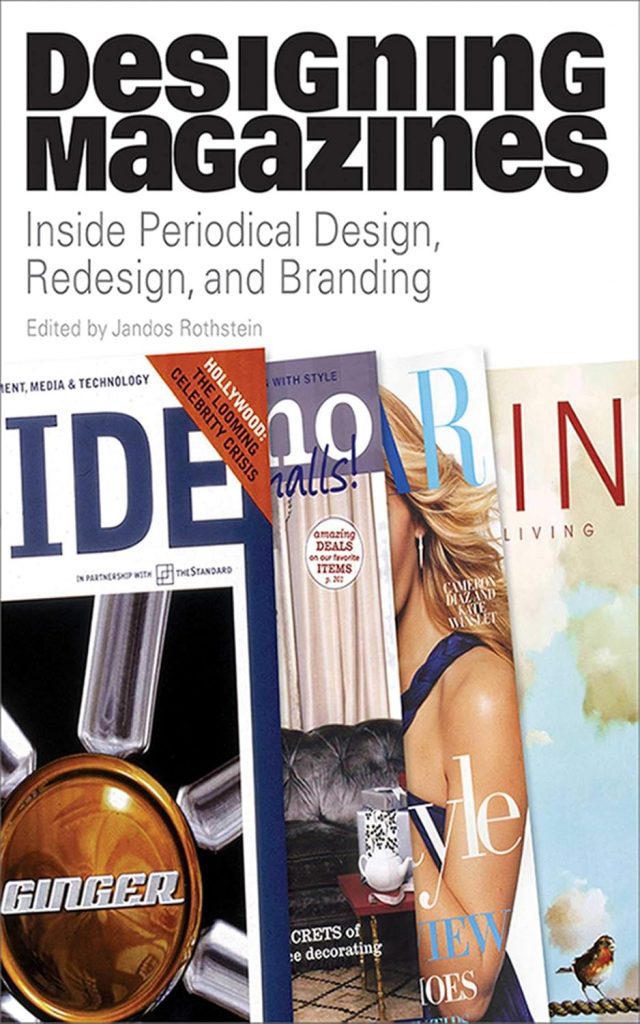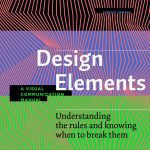
Jandos Rothstein’s Designing Magazines is a comprehensive guide to the visual and editorial design of magazines. Published in 2007, this book provides a detailed look at how typography, layout, imagery, and branding work together to create engaging and visually compelling magazines. Rothstein, an experienced designer and professor, offers insights from his years in the industry, making this a valuable resource for both aspiring and professional designers.
With the magazine industry evolving due to digital media, this book remains a foundational reference for those looking to understand traditional print design principles while also considering their applications in digital formats. Designing Magazines bridges the gap between art direction and editorial vision, emphasizing the importance of visual storytelling in publishing.
Main Themes
The book primarily focuses on three key aspects: magazine identity and branding, page layout and composition, and typography. Rothstein walks readers through the process of creating a magazine’s identity, explaining how logos, mastheads, and visual consistency play a role in establishing a recognizable brand.
The page layout section explores how to balance text and imagery effectively. Rothstein analyzes real-world examples, demonstrating how successful magazines use grids, white space, and visual hierarchy to create rhythm and readability. This section is particularly helpful for designers looking to refine their compositional skills.
Typography is another major focus, with Rothstein breaking down how different typefaces contribute to a magazine’s tone and audience perception. He explains how to pair fonts, adjust kerning and leading for readability, and ensure typographic choices align with the publication’s overall design language.
Artistic Context
Magazines have a rich history of artistic innovation, from the experimental layouts of the Bauhaus movement to the expressive, rule-breaking designs of Ray Gun magazine in the 1990s. Rothstein acknowledges these influences, providing historical context for contemporary design practices. He also references iconic art directors like Alexey Brodovitch (Harper’s Bazaar) and Herb Lubalin (Avant Garde), showing how their work shaped modern editorial aesthetics.
In an era where digital publishing is dominant, Designing Magazines reinforces why print design principles remain relevant. While the book predates many digital-first editorial trends, its lessons on hierarchy, typography, and composition still apply to web and app-based magazines.
Style and Structure
Rothstein’s writing is clear, direct, and instructional, making complex design concepts easy to understand. The book is well-structured, starting with broad design fundamentals before moving into detailed, real-world applications.
A major strength of Designing Magazines is its visual examples. Rothstein includes numerous case studies, annotated magazine spreads, and side-by-side comparisons to illustrate effective and ineffective design choices. This makes the book highly practical for visual learners.
Key Insights and Analysis
One of the book’s most valuable takeaways is that magazine design is not just about making something look good—it’s about reinforcing editorial content and engaging the reader. Rothstein emphasizes that every design decision, from font choice to column width, should serve the magazine’s storytelling and audience expectations.
Another important insight is the role of consistency and flexibility. A well-designed magazine maintains a cohesive look while allowing for creative variation. Rothstein provides practical advice on how to establish design guidelines that create a recognizable identity without becoming repetitive.
Finally, the book highlights the importance of collaboration between designers, editors, photographers, and illustrators. Effective magazine design is a team effort, requiring communication and a shared vision to produce a successful final product.
Who Should Read It?
Designing Magazines is ideal for graphic designers, art directors, and editorial designers looking to enhance their skills in publication design. It’s also a great resource for students in design programs and anyone involved in magazine production who wants to understand how visual elements impact storytelling.
While the book primarily focuses on print, many of its principles apply to digital editorial design, making it useful for those working on web-based magazines or interactive publications. However, readers looking for a deep dive into digital-first design strategies may need to supplement it with more recent resources.
Final Thoughts & Rating
Jandos Rothstein’s Designing Magazines is a practical, visually engaging, and insightful guide to magazine design. Its real-world examples and clear explanations make it a must-read for anyone serious about editorial design. Although the book was published before the rise of digital-first media, its principles remain highly relevant.
If there’s any downside, it’s that it doesn’t cover modern digital publishing tools or responsive design, which have become essential in today’s media landscape. Still, for anyone interested in print and editorial aesthetics, this book remains a valuable reference.
Rating: 4.7/5 – A must-read for magazine designers, blending historical insight with practical guidance.




